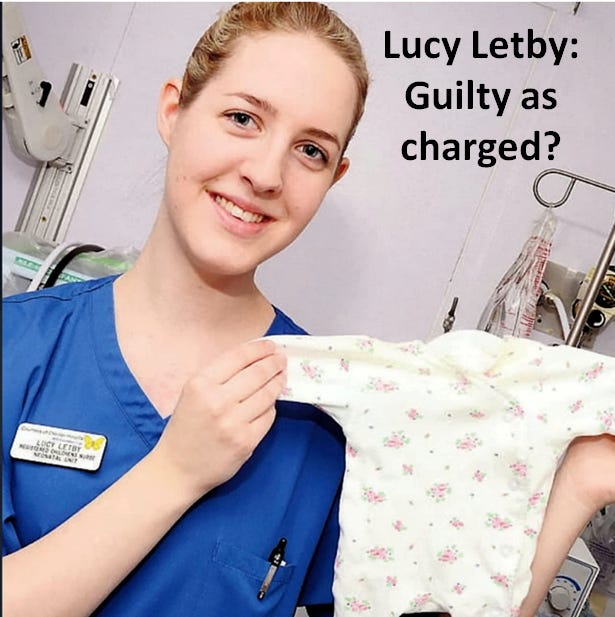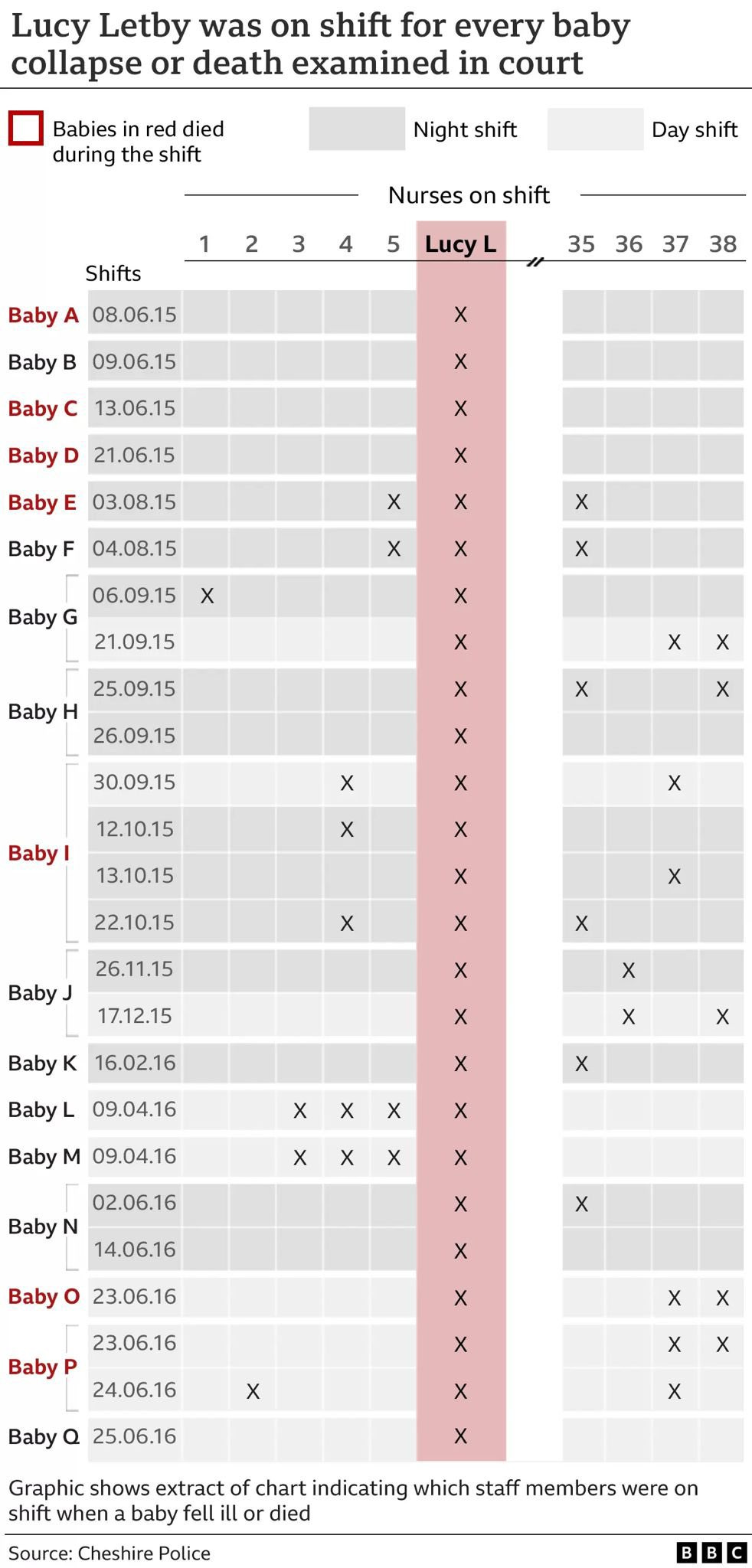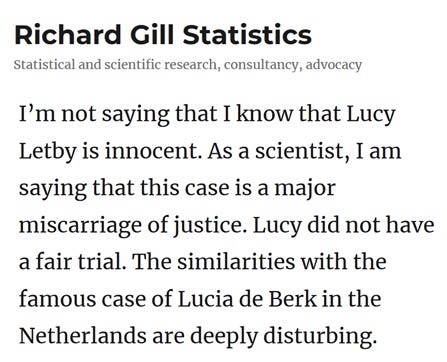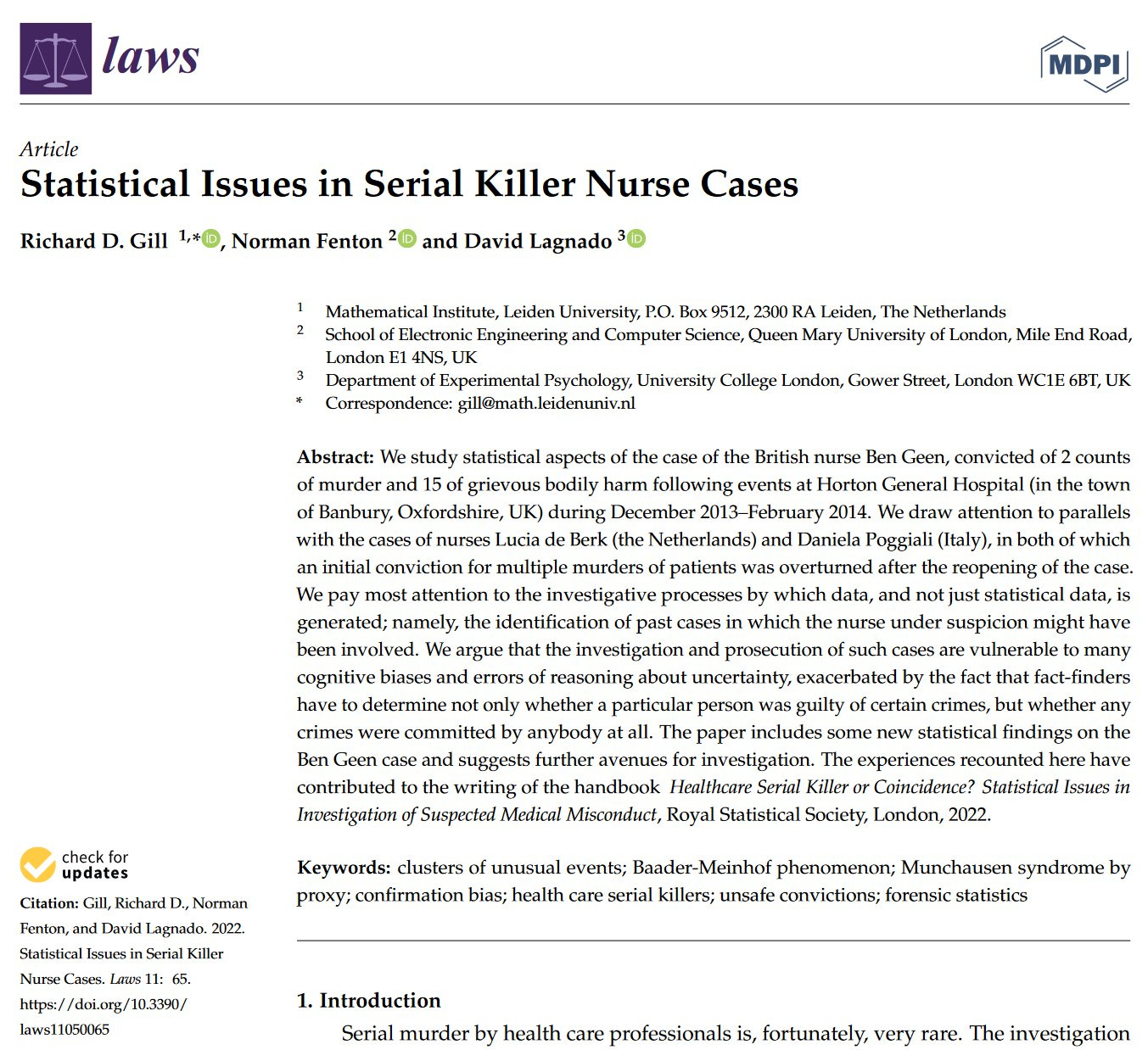This article reproduced with the kind permission of Axel McFarlane
Our Response to the UK Government’s Response to the UK Government and Parliament Petition: “Open a Public Inquiry into Covid-19 Vaccine Safety”
By Axel McFarlane and Mike Baker
The Government response, shown in italics, has been broken up into paragraphs and followed by our response respectively:
“The Government has commissioned a public inquiry into the COVID-19 pandemic and
has no plans for a separate inquiry on vaccine safety. The safety of COVID-19 vaccines is
monitored by the Medicines Healthcare and Regulatory products Agency (MHRA).”
The government commissioned public inquiry into the COVID-19 pandemic would not appear to include any investigation into possible vaccine related causes behind the latest observed data on the various reported Adverse Events, Non-Covid Excess Deaths, the rise in Cardio-Vascular issues or the recent sudden decline in Live Birth Rates. The Terms of Reference [1] for the COVID-19 Public Inquiry do not cover vaccines at all, which highlights the need for a separate inquiry into vaccine safety. The MHRA [2] is “the executive Agency of the Department of Health and Social Care that acts on behalf of the Ministers to protect and promote public health and patient safety, by ensuring that healthcare products meet appropriate standards of safety, quality and efficacy”, so as a public body, its effectiveness in carrying out its responsibility to ensure COVID-19 vaccine safety is a legitimate subject for public inquiry.
“The MHRA has authorised COVID-19 vaccine supply following a rigorous review of their safety, quality and efficacy. The clinical trials of the vaccines have shown them to be effective and acceptably safe”
Based on information released by the vaccine manufacturers, the clinical trials of the vaccines have been discovered to be flawed. In the case of the Pfizer mRNA vaccine it can be observed from Pfizer’s own clinical trials data that whilst a slight improvement in Covid-19 outcomes was observed shortly after the doses, the All Cause Mortality of the vaccinated group was worse than in the placebo group. This means that there must be fatal adverse events that lead to a net negative life saving benefit of their vaccine. The initial MHRA Emergency Use Authorisations (EUAs) were based entirely on information provided by the manufacturers (Pfizer review here [3]). As was widely-reported at the time, the Phase 3 large-scale trials were intended to last until 2023, but were curtailed after only 2 months and the participants un-blinded, violating the study protocol and making any randomised control trial analysis of medium/long-term effects impossible. This alone should have prevented rollout of the product to the wider population, considering the low risk of Covid-19 to the majority of the population and the fact that the vaccines have turned out to be not at all effective in reducing transmission. Further issues, known at the time and mentioned but dismissed in the report, include:
- 311 (1.4%) vaccine recipients vs 61 (0.3%) placebo recipients were excluded from the trial for “protocol deviations” (page 30). There is an infinitesimal probability of this happening by chance, but no explanation is given. The most likely cause, an adverse reaction causing the participant to withdraw from the trial, would have shown that the vaccine had a highly-negative safety profile.
- 78% of participants were under 65, and all were healthy (although 46% had at least one co-morbidity, it seems that very few had more than one), but the initial target demographic was elderly people with multiple co-morbidities (page 30). In fact, for individuals over 75, the vaccine efficacy confidence interval was [-0.13, 1.00], meaning that there is a significantly greater than 5% probability that the vaccine makes the over-75s more likely to catch Covid (page 48). Following standard statistical methodology, this means that the null hypothesis, that the treatment has no benefit for the over-75s, should have been accepted.
- The primary endpoint (mild Covid symptoms) was based on self-reporting, followed up by a Nucleic Acid Amplification Test (NAAT) (page 28). However, this is subject to (conscious or unconscious) bias if the researcher knows or suspects which arm (vaccine or placebo) the participant is in. This was later confirmed by the British Medical Journal’s report [4] on the whistle-blower complaint of Brook Jackson, an operations manager at Ventavia, a contractor carrying out the trials for Pfizer, describing how researchers were unblinded and patients’ adverse reports ignored or falsified.
- The secondary endpoint (severe Covid) was never reached, with 1 case in the vaccine arm vs 3 cases (and no deaths) in the placebo arm, which in itself shows that Covid-19 was not the deadly disease it was purported to be (page 32).
- The much-quoted 95% vaccine efficacy was based on 8 participants with Covid symptoms in the vaccine arm, vs 162 in the placebo arm (page 32). However, this is relative risk reduction (RRR) – absolute risk reduction (ARR), not quoted anywhere in the paper, is a less-impressive 0.88% [5].
Any of these points taken individually, but certainly in total, should have been sufficient for the MHRA to refuse an EUA at the time, until more and better data became available. Why this wasn’t done is a legitimate subject for public inquiry.
“However, as part of its statutory functions, the MHRA continually monitors the use of the vaccines to ensure their benefits continue to outweigh any risks. This is a requirement for all authorised medicines and vaccines in the UK. This monitoring strategy is continuous, proactive and based on a wide range of information sources, with a dedicated team of scientists reviewing information daily to look for safety issues or unexpected events.
The MHRA operates the Yellow Card scheme to collect and monitor information on suspected safety concerns or incidents involving vaccines, medicines, medical devices, and e-cigarettes. The scheme relies on voluntary reporting of suspected adverse incidents by healthcare professionals and members of the public. The scheme is designed to provide an early warning that the safety of a product may require further investigation.”
The scheme relies on voluntary reporting, meaning that the number of adverse incidents is likely to be significantly under-reported. A US Government-commissioned study [6] actively following up patients for 30 days after vaccination concluded that fewer than 1% of vaccine adverse events were reported to VAERS (Vaccine Adverse Event Reporting System), the US equivalent to the Yellow Card scheme. The latest MHRA Summary [7] report repeatedly states (at least 14 times) that an adverse event may be only coincidentally related to a vaccination, yet nowhere does it even mention, let alone attempt to estimate, this Under-Reporting Factor (URF). An MHRA drug safety update from 2019 [8] estimated that only 10% of serious adverse events, and 2 to 4% of less serious events, are reported (so a URF of at least 10), indicating that they are well-aware of the issue, but have chosen to ignore it in their summary reports.
“Up to and including 15 December 2021, the MHRA received and analysed: 145,446 Adverse Event reports (ADRs) from people who have received the Pfizer/BioNTech vaccine; 240,065 UK reports of suspected ADRs to the AstraZeneca vaccine; 24,721 UK reports of suspected ADRs to the Moderna vaccine. For context, up to same date, approximately 46.4 million Pfizer/BioNTech Vaccines, 50 million AstraZeneca vaccines and 2.8 million Moderna doses had been administered as first and second doses.”
This data is now out of date. This level of Adverse Events as reported up to 15th December 2021 is very high when compared to other vaccines using traditional technology and indicates an urgent need for further investigation. From the latest MHRA summary report (page 6): “As of 13 July 2022, for the UK, 172,218 Yellow Cards have been reported for the COVID-19 Vaccine Pfizer/BioNTech, 245,903 have been reported for the COVID-19 Vaccine AstraZeneca, 40,068 for the COVID-19 Vaccine Moderna and 1,779 have been reported where the brand of the vaccine was not specified.” – a total of 459,968 ADRs. Assuming MHRA’s very conservative URF of 10, this would mean 4 to 5 million adverse events caused by the Covid vaccines.
“The overwhelming majority of these reports relate to injection-site reactions (sore arm for example) and generalised symptoms such as ‘flu-like’ illness, headache, chills, fatigue (tiredness), nausea (feeling sick), fever, dizziness, weakness, aching muscles, and rapid heartbeat. Generally, these happen shortly after the vaccination and are not associated with more serious or lasting illness. These types of reactions reflect the normal immune response triggered by the body to the vaccines. They are typically seen with most types of vaccine and tend to resolve within a day or two.”
This paragraph hasn’t changed in six months (pages 6-7 of latest MHRA Summary report, and repeated again on page 16). The government response fails to mention deaths caused by or occurring within a few weeks of administration of the vaccine doses. While the majority of ADRs may be less serious, some are extremely serious, including 2,213 deaths (page 37), again likely under-reported by a factor of 10 or more. The 1976 US swine flu vaccination campaign was halted after 50 deaths – why has this (vastly-underestimated) figure of over 2,000 deaths not led to a halt to this one? Or as in the case of the withdrawal of Pandremix in the UK, a vaccine that was in 2009 ‘fast tracked’ out to the general public without the usual clinical trials having been completed, but was withdrawn after a reported 3807 adverse events 1138 of which were serious [9,10,11] and 47 of which were fatal.
Between 1st January 2001 and 25th August 2021, only 404 deaths were reported to the MHRA Yellow Card system for all other vaccines [12], meaning that Covid vaccine deaths are being reported at over 70 times the rate [13] of all other vaccines combined – if that isn’t a safety signal, then what is?
“The continuous review of available evidence from UK Yellow Card reports of suspected side-effects to the vaccines and other healthcare data does not suggest that the COVID-19 vaccines increase the risk of cardiovascular events such as heart attacks.”
No evidence is given for this assertion; however the most recent reports (up to 13th July 2022) of Yellow Card events [14,15,16,17] give a total of 28,843 cardiovascular ADRs, including 396 deaths. Even ignoring the URF, the number of adverse events is far higher than the background rate of 160 per million per year, or about 8,000 per year assuming 50 million vaccinees (page 35). The data strongly suggests a possible causal link between the vaccines and cardiovascular events such as heart attacks. If the government believes these adverse events aren’t caused by the vaccines, why don’t they investigate them to find the true cause?
“The benefits of the vaccines in preventing COVID-19 and serious complications associated with COVID-19 continue to far outweigh the risks in the majority of patients.”
No evidence at all is given for this assertion, which should form the crux of the government’s argument in refusing to commission an inquiry into Covid vaccine safety. However, there is an overwhelming body of evidence to the contrary. According to the most recent data [18] from the Office of National Statistics, the number of deaths in England and Wales in Week 29 (up to 22nd July 2022) was 10,978, or 1,680 (18.1%) above the 5-year average. Only 463 deaths had Covid-19 recorded as the underlying
cause, meaning that even assuming all the “Covid-19” deaths were actually Covid-19 (and excess) deaths, the weekly death rate was still (1,680 – 463) / (10,978 – 1,680) =13.1% above the 5-year average. This has been going on week after week, month after month throughout this year. The prime suspect for this elevated death toll must be the vaccines (what else could it be?), and the onus is on the manufacturers, the MHRA and the government to prove otherwise.
“The majority of patients” is a very small subset of the total number of recipients of the vaccine doses who are all at risk from Adverse Events, some serious. ONS data shows that only a very small minority of the UK population are at risk of becoming a Covid-19 “patient” rather than just suffering a mild case that requires no treatment. Therefore the Risk / Benefit Ratio is much higher than that suggested in the government response.
“However, the MHRA has identified the rare occurrence of myocarditis and pericarditis (both inflammatory conditions of the heart) following vaccination against COVID-19. There has been a consistent pattern of higher reporting of these rare, suspected events with the Pfizer/BioNTech vaccine Moderna vaccine, and of these occurring more frequently in males. Following analysis combined with advice from the Commission on human Medicines, the product information for the Moderna and Pfizer/BioNTech Vaccines was updated to inform of these reports and advise healthcare professionals and patients to be aware of important symptoms for myocarditis and pericarditis. These reports are very rare, with the overall reporting rate across all age groups as follows: Pfizer/BioNTech Vaccine: For suspected myocarditis (including viral myocarditis) the reporting rate is 12 reports per million doses, and for suspected pericarditis (including viral pericarditis and infective pericarditis) the overall reporting rate is 8 reports per million doses.
Moderna Vaccine: The overall reporting rate for suspected myocarditis is 42 per million doses and for suspected pericarditis is 24 per million doses. AstraZeneca Vaccine: The overall reporting rate for suspected myocarditis (including viral myocarditis and infectious myocarditis) is 4 per million doses and for suspected pericarditis (including viral pericarditis) is 4 per million doses. These events reported are typically mild with individuals usually recovering within a
short time with standard treatment and rest.”
Myocarditis and Pericarditis are never “mild” conditions because the majority of patients are left with permanent damage to heart tissue that does not repair itself. Also, the exclusive focus on myocarditis and pericarditis while ignoring all other adverse events, for example blood disorders such as thrombocytopenia, is very strange, and seems to be an attempt to suggest that heart disease is the only serious negative consequence of the vaccines. This is not to downplay the deadly danger of heart disease – a canonical review [19] of the medical literature undertaken before the “fact checkers” got to work reported that “The Myocarditis Treatment Trial reported mortality rates for biopsy-verified myocarditis of 20% and 56% at 1 year and 4.3 years, respectively. These outcomes are similar to the Mayo Clinic’s observational data of 5-year survival rates that approximate 50%. Survival with giant cell myocarditis is substantially lower, with <20% of patients surviving 5 years.” So to claim that “These events reported are typically mild with individuals usually recovering within a short time with standard treatment and rest” is entirely false.
“The MHRA will continue to closely monitor reports of suspected myocarditis and pericarditis with all of the currently authorised COVID-19 vaccines, as it continues to do with any concerns that the Yellow Card Scheme might raise. Vaccines are the best way to protect people from COVID-19 and have already saved tens of thousands of lives.”
A vaccine with a negative net benefit in terms of All Cause Mortality cannot be saving “tens of thousands of lives”. No evidence is presented to show that the vaccines have saved any lives at all, and all the evidence points in the opposite direction, as demonstrated by the otherwise-inexplicable increase in all-cause mortality over the last year.
A public inquiry needs to look at all aspects of Covid-19 vaccine safety, including whether the MHRA regulators have done their job properly and effectively or whether they have failed in their statutory duties. Because the Covid-19 vaccines have not been officially licensed (not due for consideration until 2023) and have only been granted emergency authorisation, it was inadequate to use the old yellow card reporting system and that instead every individual dose administered should have been reported back on. The government are passing on their regulatory responsibilities to the MHRA and ignoring the fact that they are the ultimate regulators and have to ensure the MHRA have done every aspect of their job to the highest of standards. The government is the regulator of the MHRA yet they are not taking such responsibilities seriously.
The government’s attempted justification for refusing a public inquiry into vaccine safety simply serves to demonstrate why such an inquiry, properly-constituted with representatives and terms of reference acceptable to all sides, is urgently necessary.
Axel McFarlane
Mike Baker
4th August 2022
[1] https://covid19.public-inquiry.uk/wp-content/uploads/2022/06/Covid-19-Inquiry-
Terms-of-Reference-Final.pdf
[2] https://yellowcard.mhra.gov.uk/information
[3] https://assets.publishing.service.gov.uk/government/uploads/system/uploads/attach
ment_data/file/997584/COVID-19_mRNA_Vaccine_BNT162b2__UKPAR___PFIZER_BIONTECH_ext_of_indication_11.6.2021.pdf
[4] https://www.bmj.com/content/375/bmj.n2635
[5] (162/17511 – 8/17411)*100 = 0.88% (from figures on page 32 of report)
[6] https://digital.ahrq.gov/sites/default/files/docs/publication/r18hs017045-lazarusfinal-
report-2011.pdf
[7] https://assets.publishing.service.gov.uk/government/uploads/system/uploads/attach
ment_data/file/1093243/Coronavirus_vaccine_-_summary_of_Yellow_Card_reporting_DLP_13.07.2022.pdf
[8] https://www.gov.uk/drug-safety-update/yellow-card-please-help-to-reverse-the-decline-in-reporting-of-suspected-adverse-drug-reactions
[9] https://www.bmj.com/content/362/bmj.k3948.full
[10] https://hansard.parliament.uk/commons/2017-03-08/debates/438e7ae2-6025-4772-85be-76920bdf8be5/pandemrixvaccinecompensation
[11] https://www.contagionlive.com/view/high-rates-of-adverse-events-linked-with-2009-h1n1-pandemic-vaccine
[12] https://expose-news.com/wp-content/uploads/2021/09/FOI-21-907-Response-
1.pdf
[13] (2213 deaths over 19 months) / (404 deaths over 248 months)
[14] https://assets.publishing.service.gov.uk/government/uploads/system/uploads/attachment_data/file/1093230/COVID-19_Pfizer-BioNTech_Vaccine_Analysis_Print_DLP_13.07.2022.pdf
[15] https://assets.publishing.service.gov.uk/government/uploads/system/uploads/attachment_data/file/1093231/COVID-19_AstraZeneca_Vaccine_Analysis_Print_DLP_13.07.2022.pdf
[16] https://assets.publishing.service.gov.uk/government/uploads/system/uploads/attachment_data/file/1093232/COVID-19_Moderna_Vaccine_Analysis_Print_DLP_13.07.2022.pdf
[17] https://assets.publishing.service.gov.uk/government/uploads/system/uploads/attachment_data/file/1093233/COVID-19_Brand_Unspecified_Vaccine_Analysis_Print_DLP_13.07.2022.pdf
[18] https://www.ons.gov.uk/peoplepopulationandcommunity/birthsdeathsandmarriages
/deaths/bulletins/deathsregisteredweeklyinenglandandwalesprovisional/weekending2
2july2022
[19] https://www.ahajournals.org/doi/10.1161/CIRCULATIONAHA.105.584532










